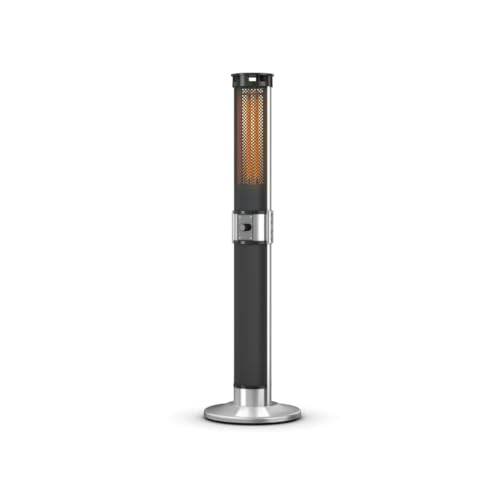How to Choose a Patio Heat Lamp Electric
When you're looking to heat your patio, you've got several options. Electric heaters are more efficient than propane models, which require fueling. They can be heated in a matter of minutes by pressing a button or flicking the switch.
They also don't emit gases that could be harmful to health. Some units have adjustable heat settings to accommodate different distances.

Heater Type
With the proper patio heater, you will be able to comfortably enjoy your outdoor living spaces well into the night and across the seasons. There are many kinds of heaters for patios, including freestanding propane and natural gas models as also ceiling- or wall-mounted electric radiant heaters. The choice you make will depend on the size of your space, power sources available, and your personal preferences.
The majority of patio heaters are powered by electricity or liquid or natural gas and emit heat in convection and radiant heating. Their output of heat is measured in watts, and can be converted to British thermal units (BTUs) for comparison. Certain models come with adjustable heat settings to give you more flexibility.
A patio heat lamp is an electric burner on a pole with a perforated metal screen that is reflective of the flames and radiates the heat downward to warm people, furniture and other objects. Some patio heat lamps come with reflective reflectors that sit over the burner and can be silvered to reduce the amount that heat is lost upwards.
The most common kind of patio heater is a gas patio heater is typically found in outdoor seating areas of bars and restaurants since they generate lots of heat quickly and distribute it evenly in all directions. They are great for warming tables. They can be portable and run off a propane tank or plumbed into your natural gas line with the latter providing more convenience and lower installation costs, but also they require ongoing expenses for fuel.
Gas patio heaters are becoming more popular as more houses have natural gas lines. They're simple to install, but do require a dedicated and properly functioning gas line to perform safely. There are portable natural gas heaters with extension hoses that assist in overcoming this limitation however they can also be a risk of tripping and also a fire hazard when not being used.
Safety
Electric patio heaters can be used safely in covered areas, as they allow heat to radiate upwards and not outwards. They are not designed to be used on an unprotected roof. The heater must be located at least 6" away from the ceiling or 18" away from the wall in order to avoid fire hazards.
Patio heaters made of propane and gas are only suitable for installation in enclosed areas with an enduring cover made for outdoor use. The covers are typically made of fire-resistant fabric and come with a roof that can be closed. The safety issues with these kinds of outdoor patio heaters are related to the fumes and flames they produce. They should be kept away from objects that ignite like chairs and curtains.
When installing Fireplaces And Stoves or any kind of patio heater, be sure to follow the manufacturer's instructions and safety precautions carefully. Choose a model that has received UL and CSA safety certifications and be sure to read the user's manual thoroughly. Make sure that the heater is not within the reach of pets and children. Some patio heaters that are freestanding, such as EUROM, come with a built-in tipping safety that automatically shuts off the heater if it is tipped over.
If your patio heater is connected to a natural gas line, you must check its condition periodically and be sure to have it tested by a qualified professional for leaks. If the line requires to be replaced, make sure to hire a licensed plumber. A professional can determine whether the line is properly routed or if it should be routed through an underground pipe. A professional can also ensure that the patio heater is plugged in to an outlet that is GFCI-rated (ground fault circuit interruptioner) to safeguard against electric fires and shocks.
Installation
The size of the patio heater is placed affects the amount of heat it will radiate into the space. The heater should be mounted away from any surfaces such as plastic and wood that may deform. It is possible to mount the heater on a structure, wall or any other surface using standard mounting brackets. Some models have a soft start feature, which reduces peak current in order to protect your circuits.
